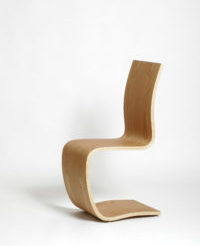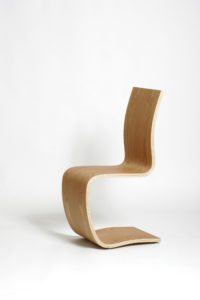Clean innovation

Pressures on finite resources are among the environmental concerns driving companies to take whole-life responsibility for their products, explains Sandra Lundberg, head of marketing at Green Furniture
Award-winning seating and lighting design specialist Green Furniture Concept was born out of a deep desire to do good for the world. The team behind Green Furniture is enormously passionate about sustainability and environmental issues, working toward constantly challenging both itself and the wider furniture industry to change for the better. This is the story about a company that saw the filth in the industry and decided to change it!
It started with a chair
The story begins in 2007, when a wooden chair called One C by Johan Berhin became fashionable overnight after appearing at a Paris design show. Berhin received a large order from a restaurant and immediately started searching for a full-scale manufacturer for his chair. But what he hadn’t expected was how badly the furniture manufacturing industry smelled, with toxic glues and coatings everywhere. Berhin decided to decline the order and instead take the time to change the course of the industry by showing everybody that it is possible to make beautiful, functional, high-quality furniture sustainably, without compromising. Thus, Green Furniture Concept was born. Today the company is pursuing sustainability on four levels – chemical awareness, design and resources, reforestation and post-sales responsibility.
Chemical awareness
Chemical substances are everywhere in our lives. Some chemicals are edible and safe, but others are toxic to humans, wildlife and the environment. It is up to consumers to decide which chemicals they want in their lives and which they can do without.
Green Furniture carefully assesses the chemical substances used in its furniture to make sure its products are free from eco-toxins and other harmful substances. The company collaborates with suppliers and environmental chemists to evaluate and continuously improve its chemical footprint.
Design and resources
With a growing global population and faster manufacturing processes, resource scarcity is here to stay. That is why renewable resources (materials such as wood) need to be regenerated at the same rate they are used. At the same time, a circular approach is needed to work with finite resources (materials such as metals). It is essential to understand and keep this in mind when designing and developing for the future.
 Green Furniture designs its products using renewable and recyclable materials, incorporating the highest possible percentage of recycled and upcycled content. The company constantly searches for new and better production methods and materials, for instance replacing the plastic feet of its Nova C bench with ocean-derived recycled plastic raw materials. It also only uses wood from certified sources, to help protect biodiversity and maintain viable use of the world’s forests.
Green Furniture designs its products using renewable and recyclable materials, incorporating the highest possible percentage of recycled and upcycled content. The company constantly searches for new and better production methods and materials, for instance replacing the plastic feet of its Nova C bench with ocean-derived recycled plastic raw materials. It also only uses wood from certified sources, to help protect biodiversity and maintain viable use of the world’s forests.
The company’s philosophy is founded on long product life and reuse, rather than buying new. All products are therefore finished with hardwax oil instead of traditional wood varnish so that the furniture can be refinished and any scratches can easily be touched up instead of replacing whole parts. When something does need to be replaced or recycled, the product’s design means that parts can be disassembled individually to minimize waste and make it straightforward to separate materials for recycling.
Reforestation
Besides working with certified sources to support and guarantee responsible forestry, Green Furniture has also developed its own way of compensating for the resources it uses, planting a tree for every product sold. Today there are three Green Plantations, two close to the manufacturing site in Sweden and one
in a privately owned agroforestry plantation in Colombia, all committed to reforesting the land and protecting nearby waterways.
Post-sales responsibility
If every manufacturer had to take care of its products throughout their life, from the harvesting of resources to the end of use, we would see a lot of smarter products on the market. This responsibility would drive more companies to make parts that can be easily exchanged and products that can be quickly and easily maintained. We would see more products that last for a long time and are made of materials that can be used again when that product’s useful life is over. This would allow more time for renewable resources to regenerate and would reduce the scarcity of finite resources.
Green Furniture has developed a buy-back system for its best-selling Nova C Series, to ensure that the products and their materials are taken care of at the end of their life. The system works like the traditional return system for bottles. At any time during the 15-year warranty period, clients can request to return the furniture. Green Furniture collects it free of charge and gives the customer a refund on the initial cost. Depending on how well the furniture has been maintained during use, the refund will vary from 5% to as much as 30%. This makes it possible for Green Furniture to continue taking responsibility for the resources used even after the products are sold. The returned products are either refurbished and sold again or disassembled and recycled.
As well as the buy-back system, Green Furniture is developing a new system, Seating-as-a-Service, which gives customers the option to lease products instead of buying them.
The post Clean innovation appeared first on Passenger Terminal Today.
